Links to external sources may no longer work as intended. The content may not represent the latest thinking in this area or the Society’s current position on the topic.
Realising the potential of cochlear implants
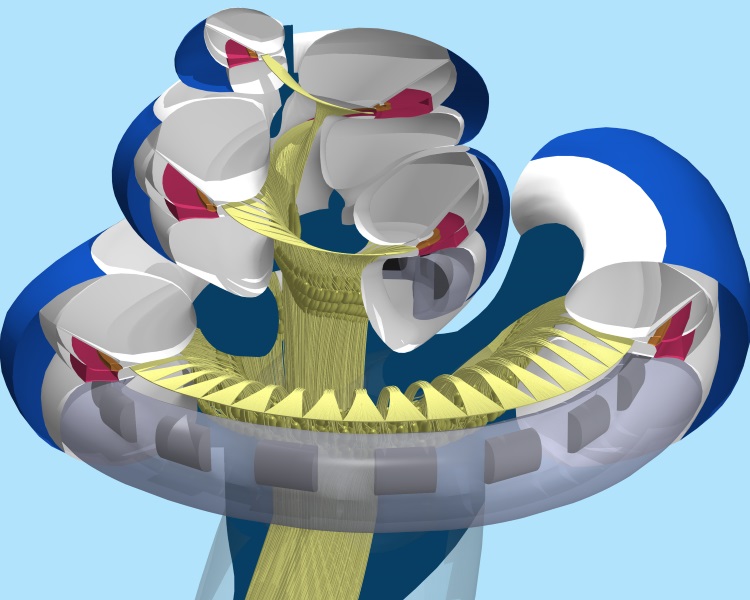
Theo Murphy meeting organised by Dr Bob Carlyon and Dr Deborah Vickers
Click watch on YouTube to view the full video playlist.
Cochlear implants (CIs) restore hearing to deaf people by electrically stimulating the auditory nerve (AN). This meeting will focus on the limitations and successes of CIs and on new methods for improving them. Topics include new methods of stimulating the AN, measuring AN survival so as to aid patient-specific processing, understanding the brain changes that occur when hearing is restored by a CI, and how to best combine CI stimulation with residual acoustic hearing.
Enquiries: contact the Scientific Programmes team
Organisers
Schedule
Chair

Dr Karolina Kluk

Dr Karolina Kluk
Dr Karolina Kluk is a Senior Lecturer in Audiology at the University of Manchester. She did her PhD under supervision of Brian Moore at the University of Cambridge (2002-2005). Before moving to the University of Manchester in 2006, she spent some time learning human electrophysiology in Terry Picton’s lab at the Rotman Research Institute in Toronto.
| 08:05 - 08:35 |
Drug delivery for improved cochlear implant performance
Cochlear implants provide useful auditory function for most recipients. In particular, implant performance is typically better for recipients who have residual hearing, whereby users can combine remaining acoustic and electrical input to achieve better speech recognition. However, the implantation of the electrode array has the potential to cause the deterioration of sensory function, in addition to potential ongoing pathological changes as a consequence of the existing aetiology of deafness. The development of therapeutic drug technology to protect or to restore lost sensory function, or to improve the interface of the electrode array with the neural elements within the cochlea, is likely to lead to meaningful clinical improvements for implant recipients. This talk will cover the clinical opportunities likely to benefit from a successful drug treatment strategy and discuss some of the current challenges and options in developing therapeutic treatments for use with cochlear implantation. The talk will discuss the unique opportunity that exists when a combining drug treatment along with a cochlear implant. In particular, the capacity to deliver therapeutic agents directly into the cochlea and the potential to use the implant for an objective assessment of treatment outcomes. 
Dr Andrew Wise

Dr Andrew WiseProfessor Andrew Wise’s research focuses on understanding hearing impairment and developing therapeutic technology to treat it. Andrew, his research team and collaborators are developing nanoparticle technology to deliver therapeutics to protect the inner ear sensory cells from degeneration and promote repair following hearing loss. His current research aims to progress this novel therapeutic approach to a first in human clinical trial. Professor Wise has a research interest in cochlear implants and the development of new technologies to improve implant performance. The delivery of therapeutic treatments could one day be used to improve cochlear implant performance by protecting residual sensory cells or by improving the interface between the target auditory neurons and the stimulating electrodes. Furthermore, the potential use of optogenetic technology may lead to significant improvements in a future bionic ear device, for instance, by improving the understanding of speech in noisy environments. |
|---|---|
| 08:35 - 08:50 | Discussion |
| 08:50 - 09:20 |
Towards the optical cochlear implant: optogenetic stimulation of the auditory pathway
As light can be spatially confined, optogenetic cochlear implants (oCI) promise to overcome the limited spectral resolution of the current electrical cochlear implant (eCI). Proof of principles studies have demonstrated the feasibility of an optogenetic approach to restore hearing in deaf animals. Towards its development to a clinical application, multiple tasks spanning from the optimising oCI stimulation of the spiral ganglion neurons (SGN) to demonstrating, using oCI prototypes, enhanced frequency resolution have to be tackled. The presentation will emphasise optogenetic stimulation of the SGNs which requires the expression of the most suitable light-sensitive protein (channelrhodopsin) and identify the optimal stimulation parameters in order to define the sound coding strategies of the future oCI. 
Dr Antoine Huet, University Medical Center Göttingen, Germany

Dr Antoine Huet, University Medical Center Göttingen, GermanyAfter an initial start as a clinician audiologist, Dr Antoine Huet followed his interest in auditory physiology at the Institute for Neuroscience of Montpellier (master and Ph.D. degrees). Using in-vivo single auditory nerve fibers recordings and a behavioral approach, he demonstrated the importance of phase-locking to detect low-frequency sounds in presence of background noise. Also, he contributed to developing a new clinical electrophysiological tool to assess the time constants and composition of the auditory nerve. In 2017, he moved his interest towards hearing restoration with light and joined the optical cochlear implant project at the Institute for Auditory Neuroscience of Göttingen. He contributed to the effort of identifying the most suitable opsin to encode sound with light in the spiral ganglion neurons and defining the optimal light pulse properties to do so. In 2021, he became a junior fellow from the MBExC cluster of excellence allowing him to continue his research about auditory processing in the auditory brainstem using light to stimulate the auditory pathway |
| 09:20 - 09:35 | Discussion |
| 09:35 - 10:05 | Break |
| 10:05 - 10:35 |
Enhanced transmission of temporal fine structure with a penetrating auditory-nerve electrode
Most cochlear-implant users show only limited sensitivity to temporal fine structure (TFS), which results in impaired pitch discrimination and impaired sound recognition amid competing sounds. In a feline animal model, a penetrating auditory-nerve electrode can selectively stimulate fibers from the cochlear apex. Such apical stimulation permits transmission of TFS at higher rates than is obtained by stimulation of the more-basal cochlear regions that are accessed by today’s cochlear implants. Ongoing psychophysical experiments in cats, coupled with non-invasive scalp-recorded electrophysiological measures, are testing whether the enhanced TFS transmission that has been demonstrated with invasive physiological methods is evident as improved temporal pitch perception. Normal-hearing cats could detect changes in the rates of high-frequency band-passed pulse trains, demonstrating non-spectral temporal pitch perception. In those animals, the scalp-recorded Acoustic Change Complex (ACC) showed a similar sensitivity to pulse-rate changes, suggesting that ACC can be used as a surrogate for psychophysical measures. A scalp-recorded Frequency Following Response (FFR) was evident across the relevant range of pulse rates. Electrical cochlear stimulation with either a cochlear implant or with a penetrating auditory-nerve electrode elicits robust FFR and ACC. Early results from these non-invasive measures suggest enhanced transmission of TFS by the penetrating electrode. 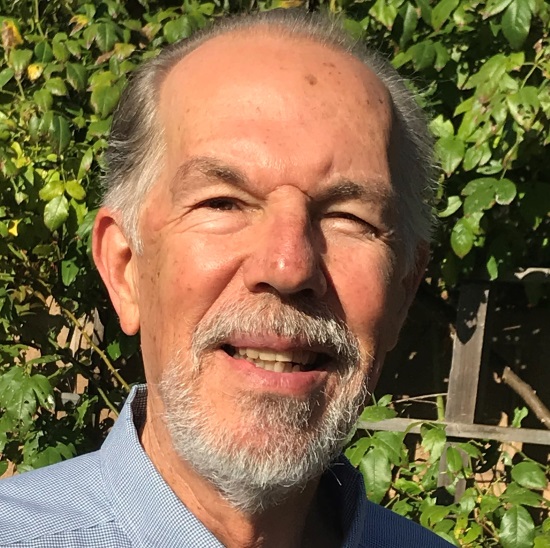
Professor John Middlebrooks, University of California, Irvine, USA

Professor John Middlebrooks, University of California, Irvine, USAJohn Middlebrooks is California born and bred. He was trained at Caltech (B.S.), UC San Francisco (Ph.D., with Michael Merzenich), and Stanford (post-doc, with Eric Knudsen). He has held faculty positions at the University of Florida, University of Michigan, and now at UC Irvine. Throughout his career, he has worked on the physiology and psychophysics of binaural and spatial hearing. In Michigan, he also began study of brain responses to cochlear-implant stimulation. In collaboration with Russell Snyder, that work evolved into animal studies of restoration of hearing with a penetrating auditory nerve electrode. Ongoing studies at UCI with collaborator Harrison Lin are evaluating the auditory nerve prosthesis in long-term animal studies, aiming to translate that prosthesis to human trials. Dr. Middlebrooks has served as the Conference Chair for the Conference on Implantable Auditory Prostheses and as the President of the Association for Research in Otolaryngology. |
| 10:35 - 10:50 | Discussion |
| 10:50 - 11:15 |
Objective measures of sensitivity and selectivity to cochlear implant stimulation
I will summarise some new objective measures of the sensitivity and selectivity to CI stimulation that can be applied in situations where psychophysical measures are hard to obtain, including programming CIs of young children and in animal experiments. I will focus on the “ALFIES” method, which provides a fast objective measure of sensitivity and of both spatial and temporal selectivity, using stimuli similar to those used clinically. It does so by interleaving two high-rate pulse trains, amplitude-modulated at F1 and F2 Hz respectively, corresponding to the 2nd and 3rd harmonics of a 40-Hz F0, and records a neural distortion response (NDR) with a frequency of F0 Hz using scalp electrodes. Unlike the electrical artefact the NDR has a group delay of 40 ms and does not depend on the distance between the recording electrode and the CI. It has a steep amplitude-growth function, making it suitable for programming CIs by objectively estimating most-comfortable levels. Its amplitude depends on the separation between the electrodes to which the F1 and F2 pulses are applied, thereby measuring spatial selectivity, while its dependence on the gap between the F1 and F2 pulses provides an estimate of temporal interactions in the patient’s auditory system. 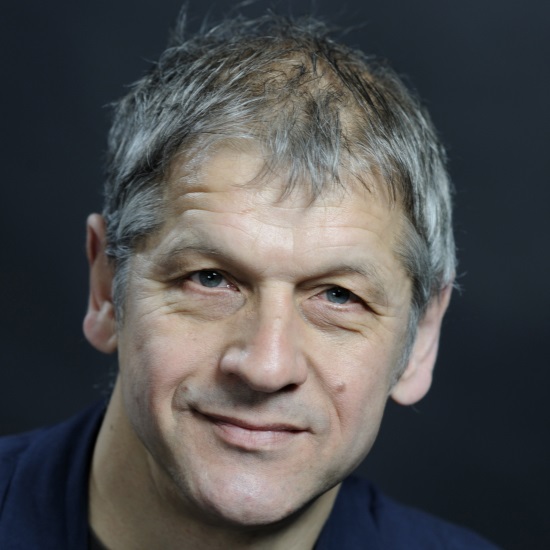
Dr Bob Carlyon, University of Cambridge, UK

Dr Bob Carlyon, University of Cambridge, UK
Dr Bob Carlyon has studied human hearing since the early 1980s. Much of his early research investigated the basic auditory mechanisms that allow us to listen to one voice in a mixture of competing sounds, and how these mechanisms interact with cognitive processes such as attention and linguistic knowledge. More recently he has studied the limitations on hearing, including difficulty in separating competing sounds, experienced by cochlear implant users. His research uses a wide range of behavioural, physiological, computational, and neuro-imaging techniques. He completed his Ph.D. at Cambridge University, and his previous appointments include a Royal Society University Research Fellowship, which he held at Sussex University. He has won the Acoustical Society of America’s R. Bruce Lindsay award and the British Society of Audiology’s Thomas Simm Littler prize. He is currently Deputy Director of the MRC Cognition & Brain Sciences Unit at Cambridge University.
|
| 11:15 - 11:30 | Discussion |
Chair

Dr Jaime A Undurraga, Macquarie University, Australia

Dr Jaime A Undurraga, Macquarie University, Australia
Dr Undurraga obtained his PhD in Biomedical Sciences in 2013 at the University of Leuven, Belgium. Since then, he has been investigating new methods to improve speech understanding in impaired and cochlear implant listeners. He has combined his background in acoustics, signal processing, and software development with neurophysiological measures to investigate how the brain encodes sounds.
In 2013 he started working at University College London (UCL) investigating and developing new neurophysiological methods to assess binaural hearing in normal, impaired, and cochlear implant listeners. This work was publicly recognised at the 8th International Symposium on Objective Measures in Auditory Implants where he obtained the “New Investigator Award”. By the end of 2015, he moved to Australia to work at the Australian Hearing Hub (Macquarie University) where he investigated several aspects of hearing – in particular, temporal, and binaural processing – using brain imaging and behavioural measures. In 2021, Dr Undurraga joined the Interacoustics Research Unit, in Denmark where he continues his research on improving and developing novel objective measurements for hearing diagnosis.
| 12:30 - 13:00 |
Electrocochleography predictions derived from a combined model of acoustic hearing and electric current spread in the cochlea
Intracochlear electrocochleography (ECochG) is a potential tool for the assessment of residual hearing in cochlear implant users during implantation and of acoustical tuning post-operatively. It is, however, unclear how these intracochlear ECochG recordings depend on stimulus characteristics, morphology and hair cell degeneration. By combining a peripheral model of hair cell activation with a 3D volume-conduction model of the current spread in the cochlea a model was developed that can simulate intracochlear ECochG recordings. The goal of the study was to compare the model outcomes with real ECochG data from CI-subjects and to predict how various patterns of hair cell degeneration will influence the results. 3D volume conduction simulations showed that the intracochlear ECochG is a local measure of activation. Increasing stimulus level resulted in broader tuning. Onset responses and higher harmonics were dependent on the pattern of hair cell loss. Simulations showed that the phase responses can be reliably recorded when spatial sampling is high, but aliasing might occur when spatial under-sampling occurs. As the model replicated characteristics seen in intracochlear ECochG recordings in the temporal, spectral and spatial domain, it may aid in the interpretation of intra- and postoperative ECochG recordings and become a valuable tool for understanding and diagnosing the etiology of hearing loss in CI-recipients. 
Professor Johan Frijns, Leiden University Medical Centre, The Netherlands

Professor Johan Frijns, Leiden University Medical Centre, The NetherlandsJohan H.M. Frijns is ENT-consultant and professor of Otology and Auditory Physics, director of the Center for Audiology and Hearing Implants and of the Otolaryngology Residency Program at LUMC. He earned his MSc (hons, 1983) in Applied Physics at Delft University of Technology, his MD (hons, 1988) and his PhD (hons, 1995) at Leiden University. In 1999 he founded the Leiden cochlear and auditory brainstem implant program, building on a growing body of translational research. Professor Frijns is teacher in a number of post-academic courses, organized several international conferences and serves on the editorial board of several scientific journals. His research interests include (neuro-)otology and audiology, especially cochlear implants (computational modelling, speech coding, incl. artificial intelligence, imaging, electrode design, socio-emotional development of deaf and hard of hearing children). He has published over 200 peer-reviewed scientific papers, (H-index 36 (WoS), Google Scholar index 45) and supervised over 25 PhD theses. |
|---|---|
| 13:00 - 13:15 | Discussion |
| 13:15 - 13:45 |
Combining stem cells and electrode arrays: Cochlear implants meets regenerative biology
The performance of a cochlear implant relies on the auditory nerve working adequately in order to convey the information to the brain. Thus, for those with auditory neuropathies or cochlear nerve deficiencies, a cochlear implant may not be an effective therapeutic option. We have previously shown that we can functionally restore the cochlear nerve in a gerbil model of auditory neuropathy using stem cells. Human embryonic stem cells can be driven to produce otic neuroprogenitors (hONPs) that, in turn, can differentiate into spiral ganglion neurons. hONPs were transplanted into the cochleae of ouabain-treated gerbils, showing engraftment and functional integration. More recently, we have developed a new gerbil model with a two-pronged sensorineural hearing loss - auditory neuropathy is induced with topical ouabain and subsequently the hair cells are lesioned with a kanamycin/furosemide treatment. To model cochlear implantation, we are using a fully-implantable rodent stimulator in which the electrode is activated by a magnetic field. In my talk, I will present the progress achieved by combining the cochlear implant prototypes with the rebuilding of the auditory nerve using hONPs. Achieving functional integration of transplanted cells generated in vitro with a cochlear implant should expand the indication for the device, increasing the patient base that could benefit from it. 
Professor Marcelo N Rivolta

Professor Marcelo N RivoltaProfessor Marcelo Rivolta qualified in Medicine and Surgery at the National University of Cordoba, Argentina and did his fellowship and doctoral work at the NIDCD, NIH in the US. He held postdoctoral positions in the US and UK, and is now Professor of Sensory Stem Cell Biology at the University of Sheffield. There, he leads a research team dedicated to study stem cells and regenerative strategies for the inner ear. In the late nineties Professor Rivolta did pioneering work isolating auditory progenitor cells from the mouse cochlea. Later, his lab identified and isolated a population of stem cells from the human foetal cochlea. This work paved the way to develop protocols to direct human pluripotent stem cells into auditory cell types. He also established the proof of concept that stem cells can be used to functionally repair the damaged cochlea. He is the founder and CSO of Rinri Therapeutics, a University of Sheffield spin out that aims to translate into the clinic the use of stem cell technologies for the treatment of hearing loss. |
| 13:45 - 14:00 | Discussion |
| 14:00 - 14:30 | Break |
| 14:30 - 15:00 |
How plastic are auditory frequency-to-place maps?
To what extent is the human auditory system plastic? More specifically, can listeners adapt to a mismatch between the frequency-place map determined by physiology and that imposed by a cochlear implant? CI users with single-sided deafness (SSD) present a very interesting platform to investigate this issue because they have access to the normal physiological frequency-place function in their normal hearing ear, and to the cochlear implant frequency-place function in the other ear. In this study SSD CI users manipulated the output frequency range of a channel vocoder to make it sound as similar as possible (when presented to the normal hearing ear) to the percepts obtained through the cochlear implant. The vocoders’ analysis filters were fixed and identical to those in the cochlear implant. A wide range of different vocoders were selected by individual SSD-CI users. The amount of frequency mismatch implicit in those selections was clearly influenced by electrode location and by experience with the CI, with deeper insertions and longer experience being associated with less mismatch. Taken together, these results suggest that adult listeners are able to adjust to frequency mismatch to some extent, but not all listeners adapt completely. This result has significant implications for understanding speech perception outcomes in adult CI users. 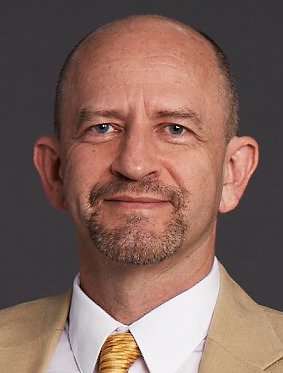
Professor Mario Svirsky, New York University, USA

Professor Mario Svirsky, New York University, USA
Mario Svirsky is the first Noel L. Cohen Professor of Hearing Science and Vice-Chairman of Research at the Department of Otolaryngology, New York University School of Medicine. His initial training was in Electrical Engineering (Universidad de la República, Montevideo, Uruguay), and his Ph.D. in Biomedical Engineering (Tulane University, 1988). He was a Postdoctoral Associate at MIT’s Speech Communication Group, where he stayed as a Research Scientist until 1995. He is a Fellow of the Acoustical Society of America, the ASHA, and AIMBE, and is a member of the Collegium Otolaryngologicum Amicitiae Sacrum, as well as an IEEE senior member. He has been an elected Co-Chairman of the Conference on Implantable Auditory Prostheses. He is Editor-in-Chief, Emeritus, of the journal Ear and Hearing. Svirsky’s research has been funded since 1992 by grants from NIH, private foundations, and the Uruguayan government, as well as cochlear implant and hearing aid companies. His recent work focuses on the extent and limitations of human auditory plasticity, as well as investigating how humans integrate acoustic and electrical auditory information.
|
| 15:00 - 15:15 | Discussion |
| 15:15 - 15:45 |
Relevance of temporal cue processing on speech perception for cochlear implant users
Speech information transmission in cochlear implant (CI) users is reliant upon the ability to detect, track, discriminate and process the amplitude-modulated (AM) envelope of speech sounds independently in different channels. Information transmission through the electrically stimulated auditory pathway can be hindered at many stages due to, for example, spread of electrical current, survival of inner-ear neurons and the neural representation of dynamic spectro-temporal cues. In this research we objectively (electroencephalogy (EEG), 64-channel Biosemi) measured the cortical representation of AM stimuli (15 versus 40Hz) using the alternating auditory change complex (ACC) paradigm to understand neural processing of dynamically changing AMs. We used a slow (0.5Hz) alternating rate between different AM frequencies, to evoke a transient cortical ACC, and a faster alternating rate to trigger neural adaptation (6-7Hz) to elicit the auditory change following response (AC-FR). Adult normal hearing listeners (aged 18-70) and CI listeners (aged 62-80) were tested. We found that CI and normal hearing listeners are sensitive to changes in AM frequency but CI listeners were poorer at tracking higher alternation rates. We attribute this to greater cortical adaptation. This has implications for parsing syllables in running speech, grouping perceptual objects, affecting listening strategies, listening effort and every day communication. 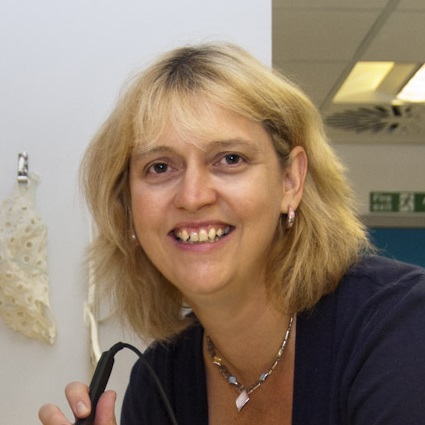
Dr Deborah Vickers, University of Cambridge, UK

Dr Deborah Vickers, University of Cambridge, UKDr Deborah Vickers is a Principal Research Associate in the Clinical Neurosciences Department at the University of Cambridge, funded by a Medical Research Council Senior Fellowship in Hearing Research. She leads the ‘Sensory Optimisation Using Neuroscience for Devices’ (SOUND) Lab, where research is focused on understanding sound perception, impact of neuroplasticity on auditory discrimination, and clinical interventions to optimise outcomes with auditory implants and hearing aids. Dr Vickers is a Speech and Hearing scientist with an extensive research background from University College London and the University of Cambridge. Previous research areas include: improving speech perception for profoundly deafened adults; understanding cochlear dead regions; factors affecting speech and language development in children with cochlear implants; using electrophysiology measures to guide remapping and understand brain changes in cochlear implant users. Dr Vickers has been instrumental in updating the NICE guidelines on cochlear implant candidacy in the UK. |
| 15:45 - 16:00 | Discussion |
Chair

Professor Manohar Bance, University of Cambridge, UK

Professor Manohar Bance, University of Cambridge, UK
Manohar Bance is the Professor of Otology and Skull Base Surgery at the University of Cambridge. He is an active cochlear implant surgeon and runs a cochlear implant lab. He works on the basic biophysics of cochlear implants, as well as clinical aspects of cochlear implant outcomes. Professor Bance runs a research clinic for patients who are not doing well with cochlear implants, to develop research tools to understand underlying causes. He supervises PhD students, Postdoctoral Fellows, Clinical Trainees and Fellow and Research Audiologists.
| 08:00 - 08:30 |
Neural strategies for adapting to changing auditory inputs
A capacity to adapt to altered inputs is critical for maintaining perceptual abilities following sensory impairments. We have shown that the auditory system can compensate for changes in the balance of inputs between the two ears, both during development and in later life, and maintain accurate sound localization in spite of reduced hearing in one ear. Our research in animals and humans has demonstrated that this can be achieved either through adaptive shifts in neuronal sensitivity to the altered binaural cues or by reweighting different spatial cues according to their relative reliability. The degree to which each strategy for adaptation is used depends on the way that subjects are trained, suggesting that targeted training strategies may be helpful for restoring sound localization in clinical populations according to their residual hearing ability and therefore the localization cues that remain available. Importantly, our recent work suggests that adaptation to asymmetric hearing loss generalizes to untrained sounds and to more challenging listening conditions. Furthermore, we have shown that visual information can influence auditory spatial judgments and the weighting of different spatial cues, and that a multisensory training paradigm can help to improve auditory spatial processing and perception following bilateral cochlear implantation. 
Professor Andrew King FMedSci FRS, University of Oxford, UK

Professor Andrew King FMedSci FRS, University of Oxford, UKAndrew King is a Wellcome Principal Research Fellow and Professor of Neurophysiology at the University of Oxford and the Director of the Centre for Integrative Neuroscience in the Department of Physiology, Anatomy and Genetics. He studied physiology at King’s College London and obtained his PhD from the National Institute for Medical Research. He has worked at the University of Oxford since then, with a spell at the Eye Research Institute in Boston, and his research has been supported by fellowships from the SERC, the Lister Institute of Preventive Medicine and the Wellcome Trust. Andrew was awarded the Wellcome Prize in Physiology and is a Fellow of the Royal Society, the Academy of Medical Sciences, and the Physiological Society. His group studies how the auditory brain adapts to the rapidly changing statistics that characterize real-life soundscapes, integrates other sensory and motor-related signals, and learns to compensate for the altered auditory inputs resulting from hearing impairment. |
|---|---|
| 08:30 - 08:45 | Discussion |
| 08:45 - 09:15 |
Deficient recurrent processing and top-down interactions in the congenitally deaf brain
Congenital deafness affects the functional and anatomical properties of the auditory system (Kral et al, 2019, Ann Rev Neurosci). It has been suggested that congenital deafness affects predominantly corticocortical functional connections within but also beyond the auditory system (the connectome model of deafness, Kral et al, 2016, Lancet Neurol). This may lead to increased risk of cognitive deficits in deaf children. Indeed, so-called induced responses, indicative of corticocortical interactions, were reduced in the auditory cortex of congenitally deaf cats (Yusuf et al, 2017, Brain). Here Dr Kral’s group directly investigated effective connectivity between primary and secondary areas of congenitally deaf cats (CDC). In adult hearing cats (HC) and CDCs, responses to acoustic and electric stimulation (through a cochlear implant) were compared. Recordings were in the primary auditory field (A1) and the higher order posterior auditory field (PAF) using multielectrode arrays. Penetrations were histologically reconstructed. For effective connectivity pairwise phase consistency, weighted phase-lag index and nonparametric Granger causality were determined and compared. Additionally, spike-field coherence was computed between different recording sites. CDCs demonstrated a substantially reduced stimulus-related corticocortical coupling in the connectivity measures used. Largest deficits were observed in sensory-related top-down interactions, in the alpha and beta band (Yusuf et al, 2021, Front Neurosci). Furthermore, spike-field coherence revealed a decoupling of supragranular and infragranular layers in A1 (Yusuf et al, 2022, Front Syst Neurosci), likely responsible for dystrophic changes in the deep cortical layers (Berger et al, 2017, J Comp Neurol). The data document that corticocortical interactions are dependent on developmental hearing experience. These observations suggests that the congenitally deaf brain cannot incorporate top-down prediction information into auditory processing and thus have a deficient predictive processing. 
Professor Andrej Kral, Hannover Medical School, Germany

Professor Andrej Kral, Hannover Medical School, GermanyAndrej Kral studied general medicine in Bratislava, Slovakia (Comenius University, MD 1993, PhD 1998). After his PhD he focused on neuroscience of cochlear implants and brain development in deafness (Institute of Sensory Physiology, J.W.Goethe University, Frankfurt am Main). He was appointed associate professor of physiology (‘Priv-Doz’, J.W.Goethe University) in 2002. From 2004 to 2009 he was Professor of Neurophysiology at the University of Hamburg. Since 2009 he has been Chaired Professor of Auditory Neuroscience at the Medical University Hannover and the director of the Department of Experimental Otology. Since 2004 he has been Adjunct Professor of Neuroscience and Cognition at the University of Texas at Dallas, USA, and since 2018 Professor of Systems Neuroscience at Macquarie University, Sydney, Australia. He serves as chair of the PhD Program ‘Auditory Sciences’ in Hannover. A Kral is an elected member of the German National Academy of Science and of the international Collegium Oto-Rhino-Laryngologicum Amicitiae Sacrum (CORLAS). |
| 09:15 - 09:30 | Discussion |
| 09:30 - 10:00 | Break |
| 10:00 - 10:30 |
Homo Cyberneticus: Neurocognitive embodiment of artificial limbs
To successfully design devices for the human body, engineers often view the body itself as the ideal design template. Similarly, for individuals missing a limb, the development of artificial prosthetic limbs often centers on embodiment as the goal: focusing device design and control on becoming more like our biological bodies. But ultimately, the success of artificial limb will critically depend on its neural representation in our brains. Importantly, neurocognitive resources might differ radically, depending on the user’s life experiences and needs. Here I will present a series of studies where we investigated the neural basis of artificial limb use for both substitution and augmentation technologies. We find that contrary to folk wisdom, the brain does not assimilate neural representations for the artificial limb with those for the biological body, creating opportunities for novel technological interfaces. Collectively, these studies suggest that although, in principle, opportunities exist for harnessing hand neural and cognitive resources to control artificial limbs, alternative non-biomimetic approaches could be also well suited for successful human-device interface. 
Professor Tamar Makin, University of Cambridge, UK

Professor Tamar Makin, University of Cambridge, UKDr Tamar Makin is a Programme Leader at the MRC Cognition and Brain Unit at Cambridge University and the leader of the Plasticity Lab. She was previously a Professor of Cognitive Neuroscience at UCL’s Institute of Cognitive Neuroscience. Her main interest is in understanding how our body representation changes in the brain (brain plasticity). Her primary model for this work is studying individuals with a hand loss. Tamar graduated from the Brain and Behavioural Sciences programme at the Hebrew University of Jerusalem in 2009. She was then awarded several career development fellowships to establish her research programme on brain plasticity in amputees at the University of Oxford, first as Research Fellow and later as a Principal Investigator. She joined the faculty of UCL in 2016 and moved to Cambridge in 2022. She is currently supported by the European Research Council (Starting and Consolidator Grants), the Wellcome Trust (Senior Research Fellow) and the UK Engineering and Physical Sciences Research Council. |
| 10:30 - 10:45 | Discussion |
| 10:45 - 11:15 |
Neural coding and plasticity with cochlear implants
Cochlear implant (CI) users with a prelingual onset of hearing loss show poor sensitivity to interaural time differences (ITDs), an important cue for sound localization and speech reception in noise. Similarly, neural ITD sensitivity in the inferior colliculus (IC) of neonatally-deafened animals is degraded compared with animals deafened as adults. Here, neonatally-deafened rabbits were provided with chronic bilateral CI stimulation to investigate whether auditory experience through bilateral CIs during development can reverse the effect of early-onset deafness on ITD sensitivity. In the early-deaf rabbits that received chronic stimulation during development, the prevalence of ITD sensitive neurons was restored to the level of adult-deaf rabbits. Also neural ITD sensitivity in the early-deaf and stimulated rabbits improved partially. In contrast, chronic CI stimulation did not improve temporal coding in early-deaf rabbits. These findings highlight the importance of auditory experience during development on the maturation of binaural circuitry. 
Dr Yoojin Chung, Harvard Medical School, USA

Dr Yoojin Chung, Harvard Medical School, USADr. Yoojin Chung obtained her bachelor’s degree in electrical engineering at Seoul National University (Seoul, South Korea) and her doctorate in biomedical engineering at Boston University (Boston, USA). As an Instructor in Otolaryngology at Harvard Medical School and Massachusetts Eye and Ear Infirmary (Boston, USA), Dr. Chung focused on understanding how the auditory system processes sounds presented through cochlear implants (CI) with the goal of improving the perceptual performance in CI. |
| 11:15 - 11:30 | Discussion |
| 11:30 - 12:15 | Lunch |
| 12:15 - 12:45 |
Impact of auditory deprivation and plasticity on binaural hearing in CI users
Our lab studies children and adults who receive bilateral cochlear implants (BiCI), or adults with single-sided deafness receiving a CI in the deaf ear (SSD-CI). Bilateral hearing typically improves localization of sounds and segregation of speech from background noise compared with unilateral hearing. However, patients typically perform worse than normal hearing listeners. We use several approaches to understand mechanisms driving gaps in performance, including asymmetry in sensitivity to monaural information such as modulation detection. Further interaural mismatch in place of stimulation along the cochlea, age at onset of deafness and age at implantation contribute to recovery of binaural hearing. Because CI processors do not preserve binaural cues with fidelity, we use research processors to generate multi-channel binaural stimulation strategies that introduce different rates of stimulation across the electrode arrays, thereby preserving rates that are important for both binaural sensitivity and speech understanding. In addition, eye gaze studies reveal developmental factors that in decision-making that are not observed with measures of threshold. Finally, pupillometry studies provide insight into the impact of integrating inputs from two ears, whereby in some instances improved performance with two ears can be “costly” in the listening effort domain. 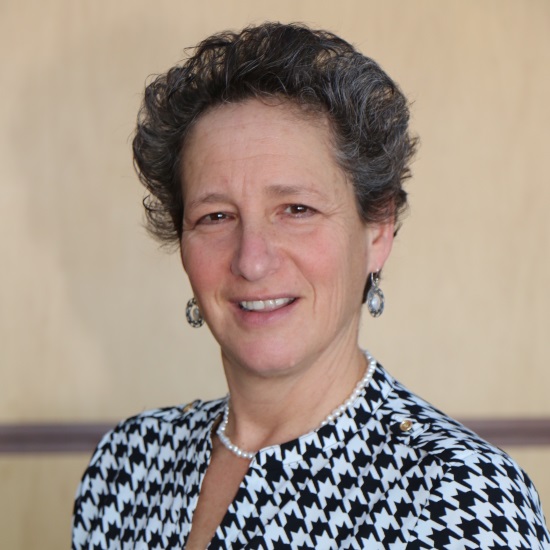
Professor Ruth Litovsky, University of Wisconsin-Madison, USA

Professor Ruth Litovsky, University of Wisconsin-Madison, USARuth Litovsky is Oros Family chair, department chair and director of the Binaural hearing and speech lab at the Waisman Center. She received her PhD in psychology and psychoacoustics and completed a postdoctoral fellowship in auditory neuroscience. She has published over 120 papers and book chapters. Her research focuses hearing abilities covering lifespan of humans to include infants and elderly adults. Her research program focuses on hearing restoration with cochlear implants, in particular the impact of bilateral implantation, and more recently single-sided deafness. Her lab also uses pupillometry and eye gaze measures to examine ‘real time’ processing of information and listening effort during perceptual tasks. Her lab is also beginning to study auditory function in conjunction with cognition and language in young adults with Down Syndrome. Professor Litovsky teaches courses in undergraduate and graduate programs, serves on numerous national and international grant review panels and editorial boards, and in various positions of leadership in the research community. She is President Elect of the Association for Research in Otolaryngology. She has received a number of awards, including a Fulbright Senior Fellowship. Her lab has over 20 students, postdoctoral fellows, engineers and audiologists. Her ongoing research program has been funded for over 20 years by grants from the NIH-NIDCD. |
|---|---|
| 12:45 - 13:00 | Discussion |
| 13:00 - 13:30 |
Simulation of spatial hearing of bilateral CI users with an electrically stimulated excitatory-inhibitory (EI) interaction model
Bilateral cochlear implants (CIs) greatly improve the spatial hearing of CI users compare to those with only one implant. However substantial gaps still exist between bilateral CI users and normal hearing listeners in different aspects, such as their lateralization and localization performance. Computer models are expected to partially reveal the possible reasons behind such gaps, by dissecting the specific contribution of each stage along the whole processing chain. In order to provide a model framework for predicating bilateral CI users’ lateralization or localization performance in a variety of experimental scenarios, here a recently published electrically stimulated single excitation-inhibition (EI) model neuron (Hu et al. 2022, JARO) was extend to population-EI-model neurons. The proposed model framework includes (a) parameter initialization, (b) binaural signal generating, (c) switchable CI processing, (d) auditory nerve (AN)- and EI- neuron processing, and (e) decision model stages. For demonstration purposes, several bilateral CIs experiments were simulated, such as pulse rate limitation of ITD sensitivity; left/right discrimination or lateralization; free-field localization with and without two independent automatic gain controls (AGCs). In general, the model framework could capture the average performance of all selected experiments even with the same EI-model units and a very simplified decision model. 
Dr Hongmei Hu, Carl von Ossietzky-Universität Oldenburg, Germany

Dr Hongmei Hu, Carl von Ossietzky-Universität Oldenburg, Germany
After achieving her PhD in Information and Signal Processing in Southeast University (China), Dr Hongmei Hu moved to the United Kingdom and worked as a Marie Curie senior researcher in Southampton University in 2010. Then she was promoted from a lecturer to a tenured associate professor in Jiangsu University, China in 2012 where she received both her Bachelor and Master degrees. For personal interests, Dr Hongmei Hu moved to Carl von Ossietzky-Universität Oldenburg in Germany in 2013 to continue her researches in the field of the binaural hearing, especially focusing on further developing new techniques for bilateral cochlear implants (CIs). Her current main research threads are: 1) subjective perception (psychoacoustic) and objective (Electroencephalography, EEG) measurements based fitting strategies for CI users; 2) advanced signal processing and electric modelling for CIs; 3) speech in noise for tonal and non-tonal languages using our newly developed Mandarin and the exist Matrix sentence tests.
|
| 13:30 - 13:45 | Discussion |
| 13:45 - 14:00 | Break |
| 14:00 - 14:30 | Discussion |
| 14:00 - 14:30 |
Can two cochlear implants promote development of one binaural hearing system in children?
Bilateral cochlear implants (CIs) have provided hearing advantages over use of a single CI in children with deafness in both ears. Yet, the goal of promoting normal binaural/spatial hearing development in these children remains elusive. Evidence of remaining abnormalities in children using bilateral CIs comes from behavioral measures of impaired sound localization and sensitivity to binaural cues. These challenges may reflect abnormalities in integration of bilateral CI input in the auditory brainstem and cortex, including disruptions in functional connectivity, as measured with electrophysiology in children. We suggest that mismatches in bilateral CI input contribute to binaural/spatial hearing challenges by creating an aural preference for one ear when implantation of the opposite ear is delayed or allowing ongoing asymmetries or mismatches in stimulation of the two ears. While the former problem can be addressed through early access to CI in each candidate ear, there is no present protocol to harmonize the separate program parameters and processing of independent CIs. Present studies seek to identify these sources of mismatched bilateral CI input and to provide methods that might be used to resolve these challenges to binaural hearing development. 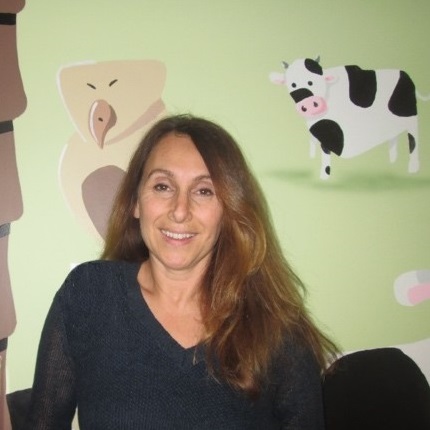
Professor Karen Gordon, The Hospital for Sick Children, University of Toronto, Canada

Professor Karen Gordon, The Hospital for Sick Children, University of Toronto, CanadaKaren Gordon, PhD, is a Professor in the Department of Otolaryngology and a Graduate Faculty Member in the Institute of Medical Science at the University of Toronto. She works at the Hospital for Sick Children in Toronto, Ontario, Canada, as a Senior Scientist in the Research Institute and an Audiologist in the Department of Communication Disorders. She is Director of Research in Archie’s Cochlear Implant Laboratory and holds the Bastable-Potts Health Clinician Scientist Award in Hearing Impairment and Cochlear Americas Chair of Auditory Development. Karen’s research focuses on auditory development in children who are deaf and use auditory prostheses including cochlear implants. Her work is supported by research funding from the Canadian Institutes of Health Research along with the Cochlear Americas Chair in Auditory Development and generous donations. |
| 14:45 - 15:15 |
Neural plasticity constrains the sound of a cochlear implant
The provision of a cochlear implant to patients who are single-sided deaf has allowed researchers to estimate the sound quality, or voice, of a cochlear implant. Clean signals can be directed to the implanted ear and then signals that might sound like the CI (candidate signals) can be directed to the normal hearing ear. Patients can then tell the researcher how close the candidate signals come to the sound of the CI. To create close approximations to CI sound quality, the group currently choose from the following operations: 1) flatten the intonation contour, 2) upshift F0, 3) upshift formant frequencies, 4) smear the signal in the frequency domain, 5) add a flange effect, 6) combine natural speech signals and noise or sine vocoders, 7) smear the signal in the time domain and 8) high pass, low pass or band-pass the signal. Altering natural speech signals using subsets of these operations has allowed us to create close matches to CI sound quality for many patients. A muffled sound quality dominates the matches for many patients while a higher ‘pitch’ created by an upshifted formant pattern or F0 dominates the matches for others. A small number of patients match to signals that are almost clean – an outcome that seems very unlikely. 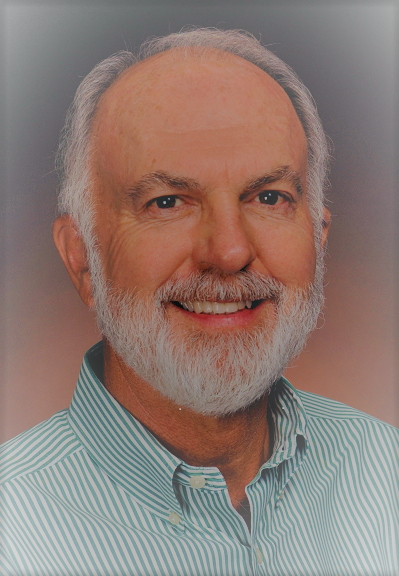
Professor Michael Dorman

Professor Michael DormanProfessor Dorman received his Ph.D. in Experimental Child and Developmental Psychology with a Linguistics minor from the University of Connecticut. For a period following his degree, and while on the faculty of the City University of New York, he was a staff scientist at Haskins Laboratories in New Haven, Connecticut working on problems of speech acoustics and speech motor control. He then moved to Arizona State University where he is currently Professor Emeritus in the College of Health Solutions. Professor Dorman has over 200 publications in areas including speech perception, cortical lateralization of function, neural plasticity and cochlear implants. His laboratory developed the AzBio sentence lists which are the industry standard for testing cochlear patients in the United States. |
| 15:15 - 15:30 | Discussion |
| 15:30 - 16:00 |
Panel discussion

Dr Bob Carlyon, University of Cambridge, UK

Dr Bob Carlyon, University of Cambridge, UK
Dr Bob Carlyon has studied human hearing since the early 1980s. Much of his early research investigated the basic auditory mechanisms that allow us to listen to one voice in a mixture of competing sounds, and how these mechanisms interact with cognitive processes such as attention and linguistic knowledge. More recently he has studied the limitations on hearing, including difficulty in separating competing sounds, experienced by cochlear implant users. His research uses a wide range of behavioural, physiological, computational, and neuro-imaging techniques. He completed his Ph.D. at Cambridge University, and his previous appointments include a Royal Society University Research Fellowship, which he held at Sussex University. He has won the Acoustical Society of America’s R. Bruce Lindsay award and the British Society of Audiology’s Thomas Simm Littler prize. He is currently Deputy Director of the MRC Cognition & Brain Sciences Unit at Cambridge University.

Dr Deborah Vickers, University of Cambridge, UK

Dr Deborah Vickers, University of Cambridge, UKDr Deborah Vickers is a Principal Research Associate in the Clinical Neurosciences Department at the University of Cambridge, funded by a Medical Research Council Senior Fellowship in Hearing Research. She leads the ‘Sensory Optimisation Using Neuroscience for Devices’ (SOUND) Lab, where research is focused on understanding sound perception, impact of neuroplasticity on auditory discrimination, and clinical interventions to optimise outcomes with auditory implants and hearing aids. Dr Vickers is a Speech and Hearing scientist with an extensive research background from University College London and the University of Cambridge. Previous research areas include: improving speech perception for profoundly deafened adults; understanding cochlear dead regions; factors affecting speech and language development in children with cochlear implants; using electrophysiology measures to guide remapping and understand brain changes in cochlear implant users. Dr Vickers has been instrumental in updating the NICE guidelines on cochlear implant candidacy in the UK. |
